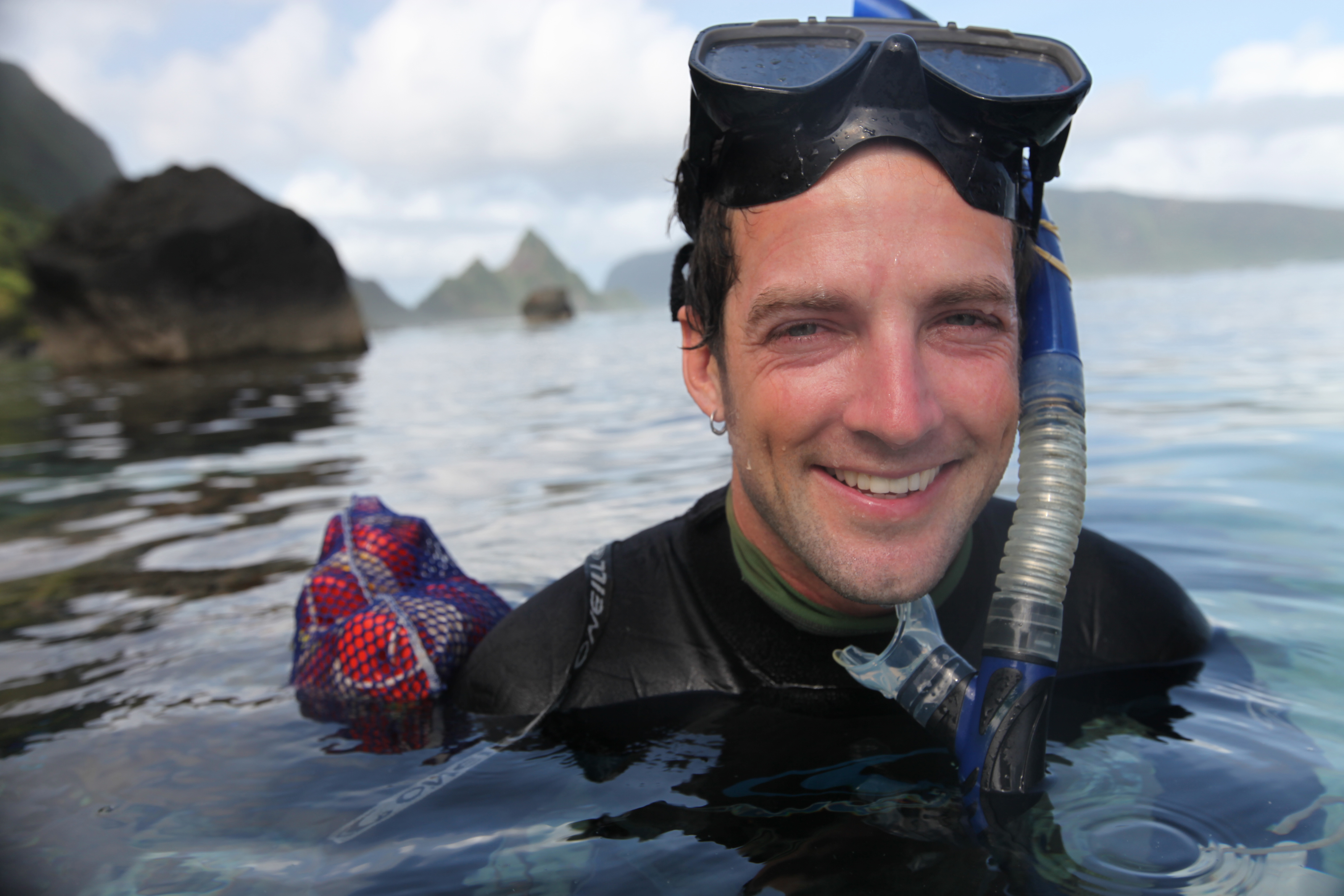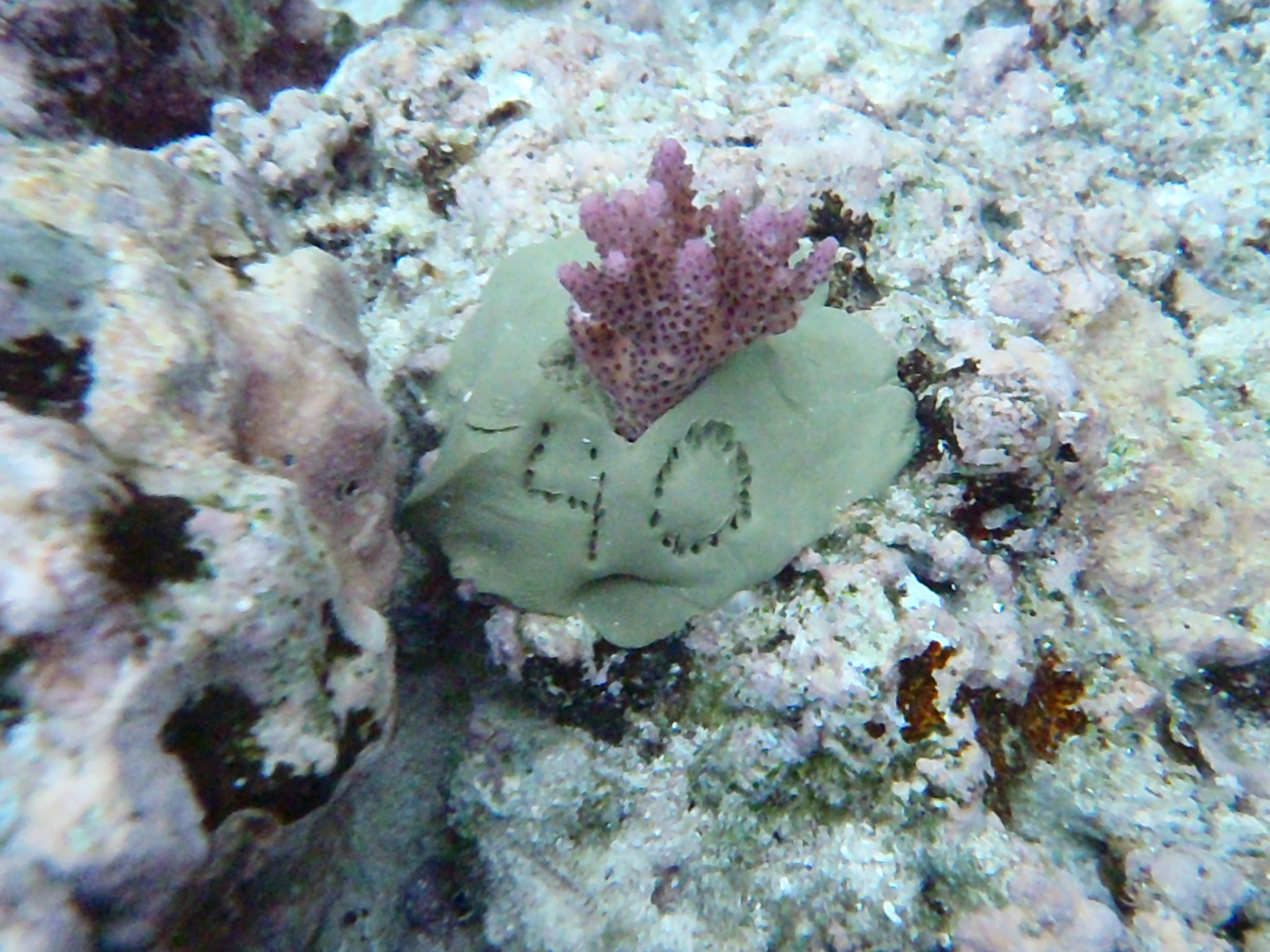ODU's Barshis Finds Corals Fight Back Against Climate Change
April 24, 2014
Daniel Barshis, a young marine molecular biologist who joined Old Dominion University's faculty in 2013, has published widely disseminated research findings over the past decade showing that some corals seem to be capable of fighting back against the ravaging effects of climate change.
His work has received careful attention - and has been featured in magazines and journals such as Mother Jones and Nature - because so many scientists have produced evidence that rising ocean temperatures and acidity are leading to massive die-offs of coral reefs. These reefs provide nurturing habitat for about 25 percent of sea creatures.
This month, Barshis' work is again on the international stage with the publication of two articles, one in Science magazine and the other in the journal Molecular Biology and Evolution published by Oxford University Press.
In the Science article, for which Barshis is a co-author along with lead author Steve Palumbi of Stanford University's Hopkins Marine Station, a case is made for corals being able to adapt via "nature and nurture" to waters that are dangerously warm.
The adaptability of corals the researchers studied in American Samoa suggests that the organisms have a greater scope to tolerate future warming than they are usually given credit for, Palumbi said in a news release from Stanford.
"This ability, if general among corals, could give them scope for growth a few decades more into the future than some recent dire warnings suggest," the release went on to state. "Warming and more acidic seas are likely to overwhelm corals eventually, but perhaps we have a few more decades to solve these global problems."
Palumbi, Barshis and colleagues focused their studies on back reef areas in American Samoa that heat up to temperatures that cause most corals to expel their internal symbiotic algae. These algae not only give healthy coral a vivid color, but also produce food for their host via photosynthesis, and, in return receive nutrients from coral. When heat-threatened coral expel the algae, they lose their source of food and their color, a process called "bleaching," which can be fatal.
Some corals in American Samoa live and grow in very warm waters, and the researchers set out to learn why. They transplanted pieces of coral colonies into hot and cool reef zones of the U.S. National Park of American Samoa. For two years, they followed the split corals to learn if individual coral colonies transplanted into the hot areas acquired heat resistance. The results showed that colonies in the hotter area hardened themselves against heat stress, and were able to tolerate strong heat stress better than the same colonies living in less stressful environments.
By carefully measuring the heat hardening, however, the researchers found that corals from elsewhere on the reef acquired only about half the heat tolerance of corals that naturally live in hot water. The other half was due to evolutionary adaptation between populations living in different areas.
So the mechanisms by which these corals fight back against ocean warming are likely to be half nature and half nurture, Palumbi said. This means it is half adaptation based on their genetic makeup, and half physiological adjustment of individual colonies to local conditions. An estimate of how fast these two processes occur shows some strong differences. The physiological adjustment - and half the heat tolerance - comes along 50 times faster than the evolutionary change. This faster rate is extremely important when considering the rate at which ocean temperatures are changing.
The researchers warn that climate change may not wait around for the many generations coral colonies may need to evolutionarily adapt to higher heat tolerance.
Barshis is the lead author and Palumbi a co-author of the article in Molecular Biology and Evolution, which turned an eye toward the climate-change adaptability of one of coral's symbiotic algae partners, a dinoflagellate called Symbiodinium. If the coral themselves can have a positive genetic response to warming waters, might the symbiotic partners do so as well?
The authors' answer is, as Barshis put, "the symbionts don't seem to notice the water changing around them."
"In contrast to what we found with the corals themselves, there was no detectible genetic response in the Symbiodinium to three full days of heat stress, despite physical breakdown of the symbiosis. This means these symbionts either don't care about heat, or they're responding in a different way that we can't see." Barshis said.
Still, the researchers found interesting differences in gene expression between the two types of Symbiodinium they studied that seemed to bode well for long-term positive adjustment in heat tolerance. And they found other evidence, as well, that very gradual acclimation over a year or more might bring positive results.
"While still preliminary, we did find evidence that Symbiodinium might be able to adjust their gene expression after 12 months of acclimating to shifting environmental conditions," Barshis said.
Barshis was lead author and Palumbi a co-author of a 2013 publication in Proceedings of the National Academy of Sciences that described their findings up to that point about the adaptability of American Samoa corals to climate change. They reported then that some Acropora hyacinthus corals in the back reef of Ofu Island are able to thrive in pools that experience daily heat fluctuations of up to 6 degrees centigrade.
In order to find the molecular basis for this resilience, the researchers compared gene activity in heat-resistant and heat-sensitive Acropora hacinthus corals by measuring their transcriptome (the array of RNA molecules transcribed from the genes) under different temperatures.
They found a suite of genes that is more highly expressed in the resistant corals under normal conditions, and that this suite codes for antioxidants and other proteins that organisms deploy in response to heat shock.
Barshis told Mother Jones at the time that the strongest corals came from pools that were consistently, but briefly, exposed to high temperatures during low tides over time. "It kinda comes down to what doesn't kill you makes you stronger, like an athlete that has been training since a very young age" he was quoted as saying.
The researchers' findings suggest ways to predict how different corals will fare during climate change, and are expected to influence coral reef conservation efforts.
Barshis, an assistant professor in ODU's Department of Biological Sciences, received a B.S. in ecology/environmental science in 2000 from The Evergreen State College and a Ph.D. and M.Sc. in ecology, evolution and conservation biology in 2009 from the University of Hawaii. Prior to joining ODU he was an assistant project scientist for the National Marine Fisheries Service, University of California, Santa Cruz.
(Photos are by Dan Griffin and Daniel Barshis.)



